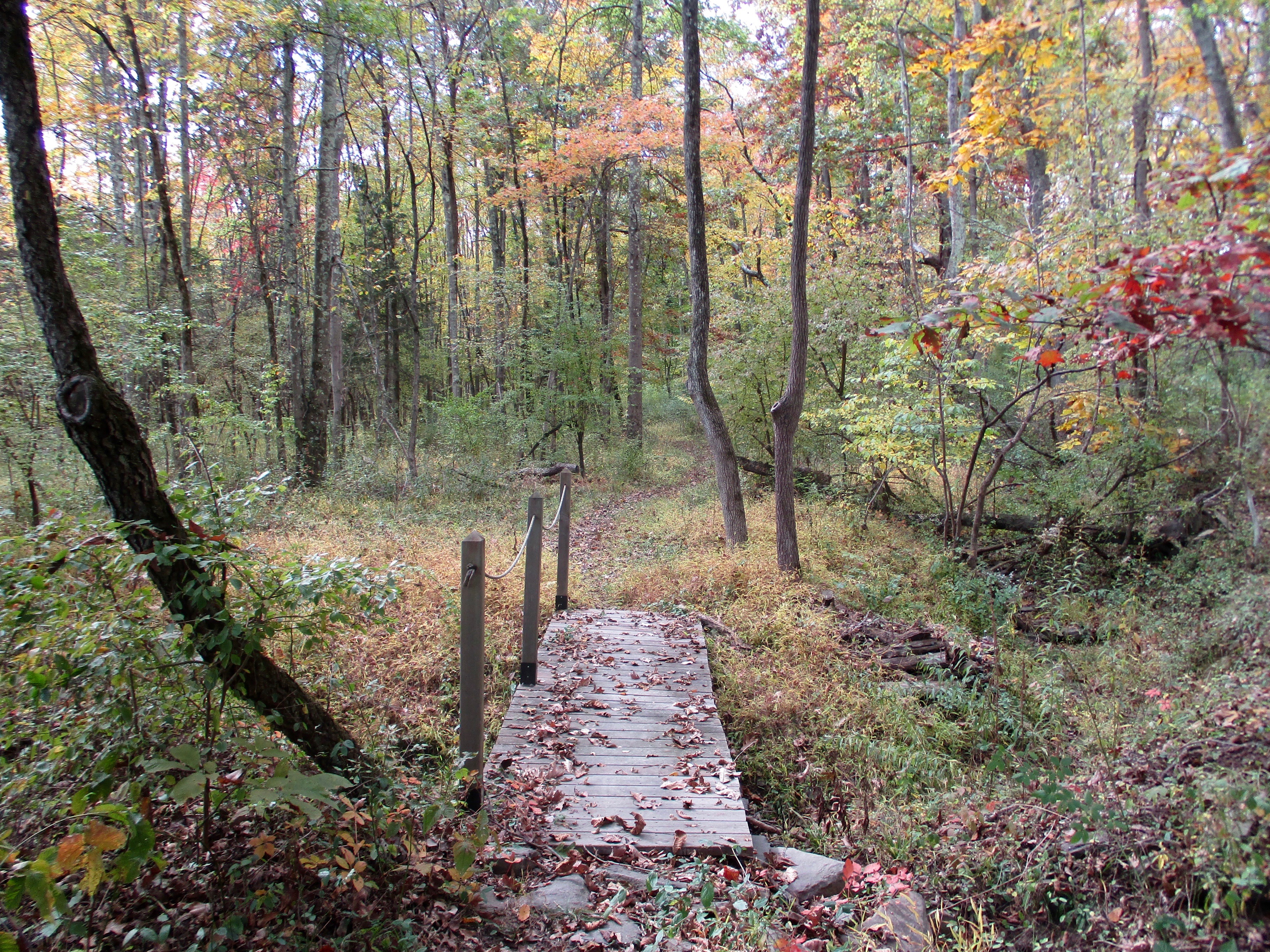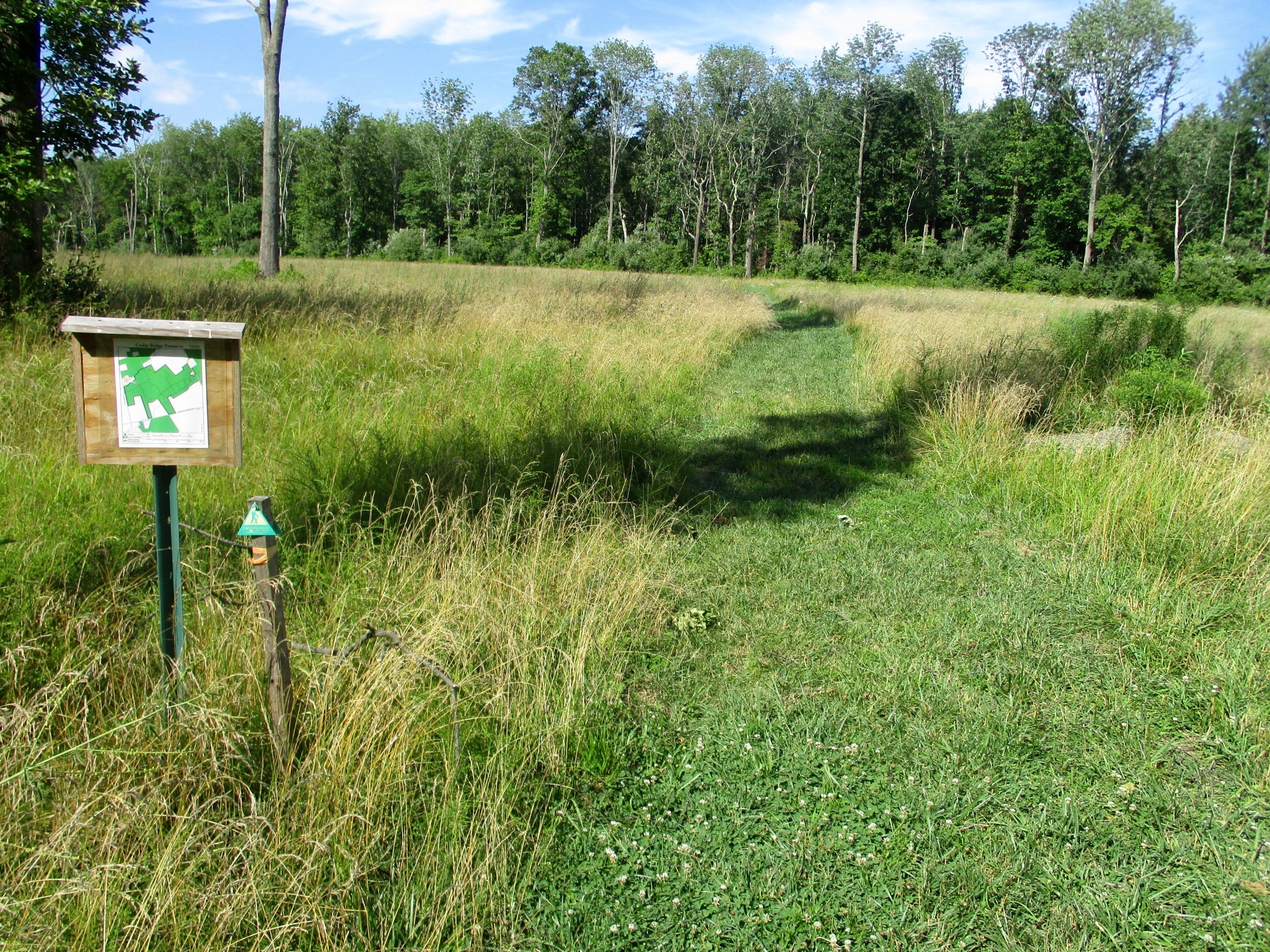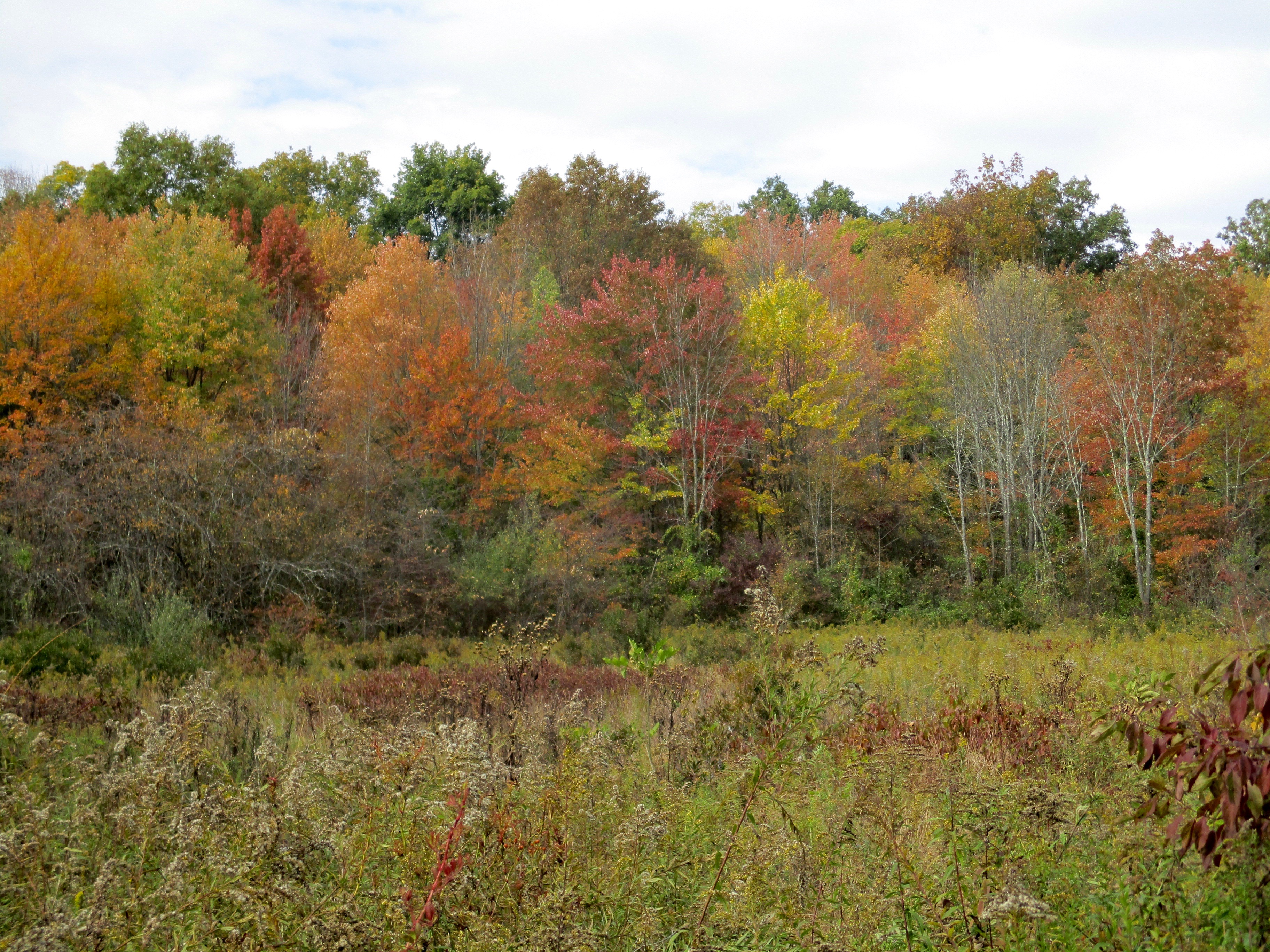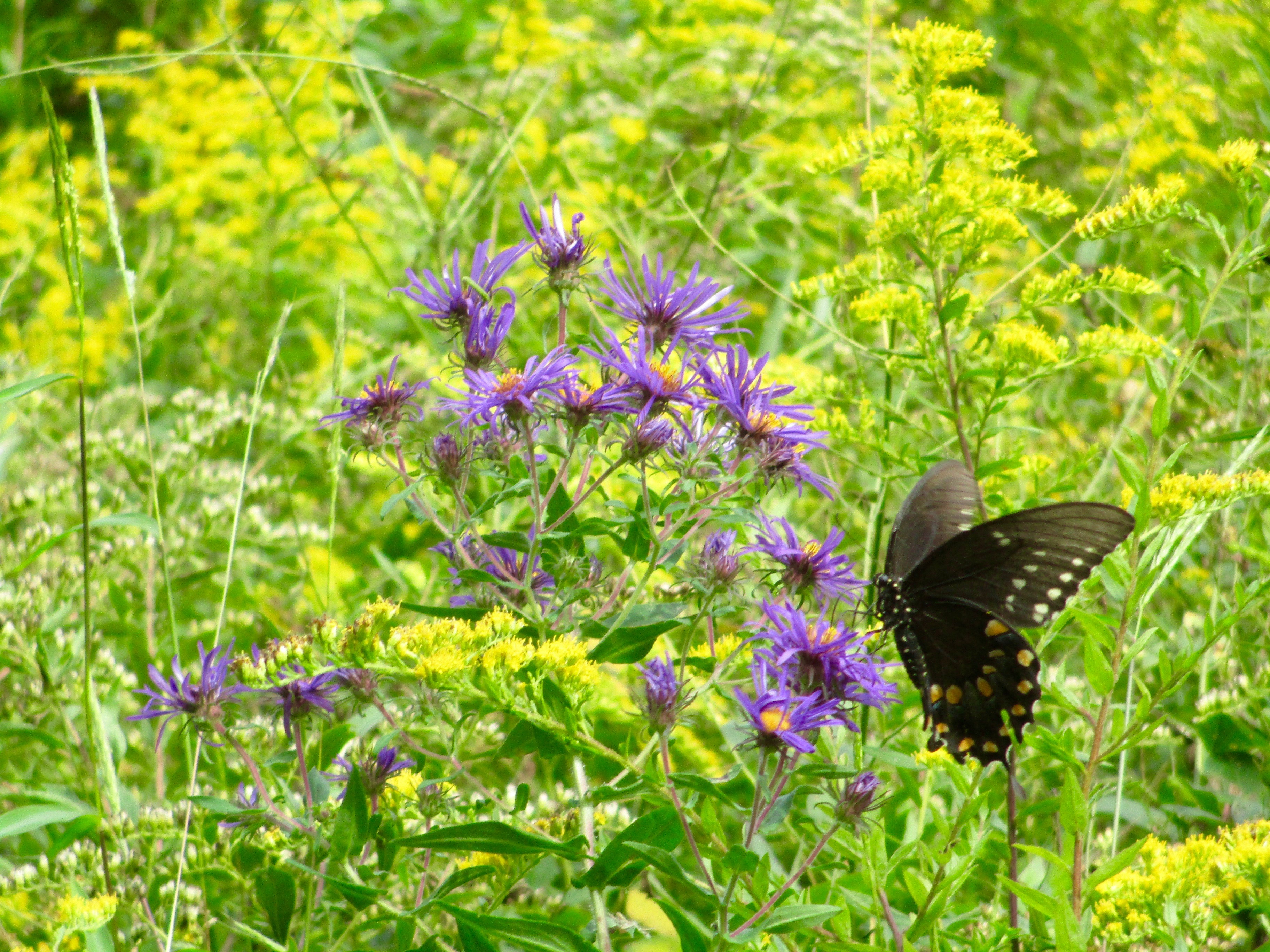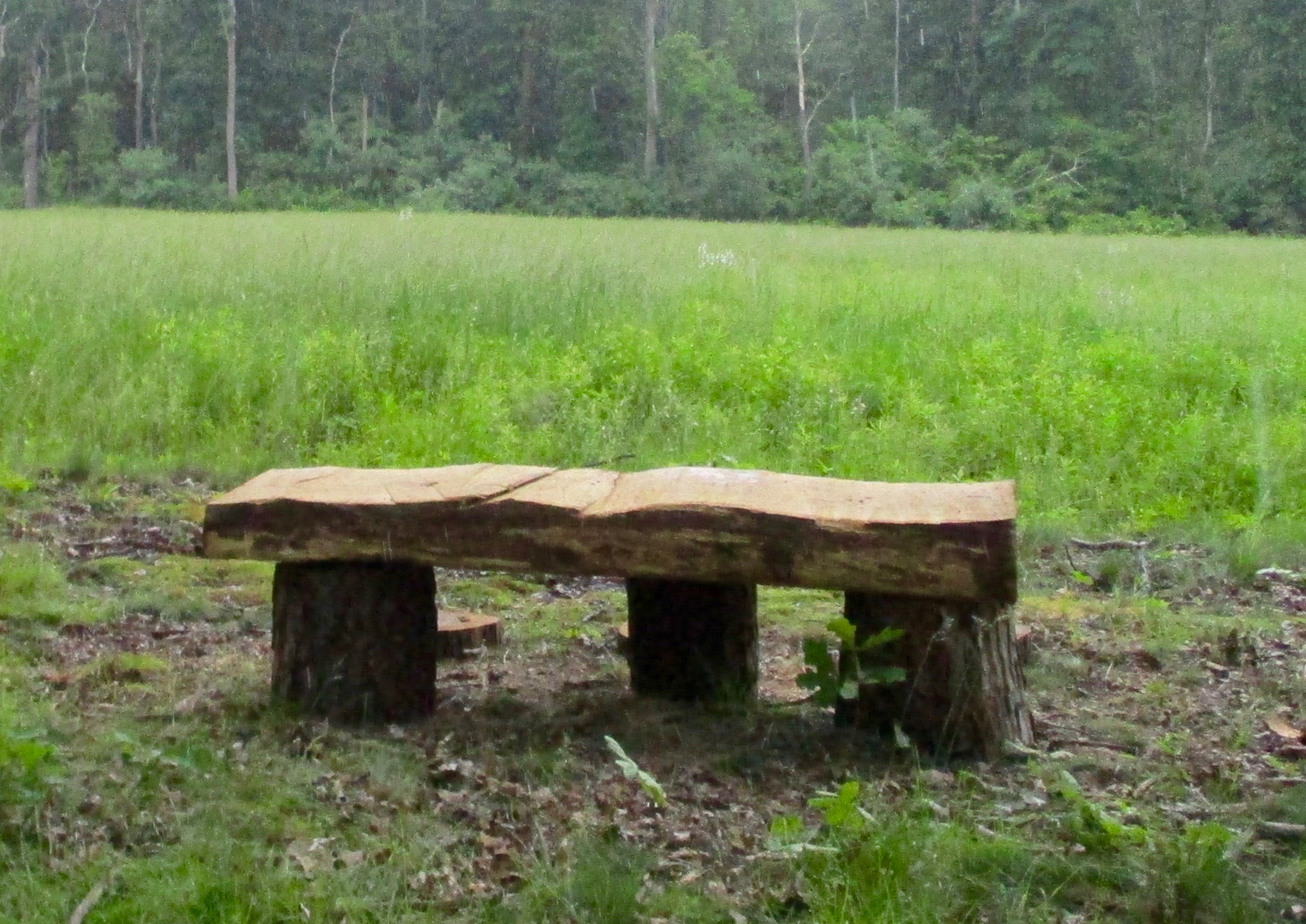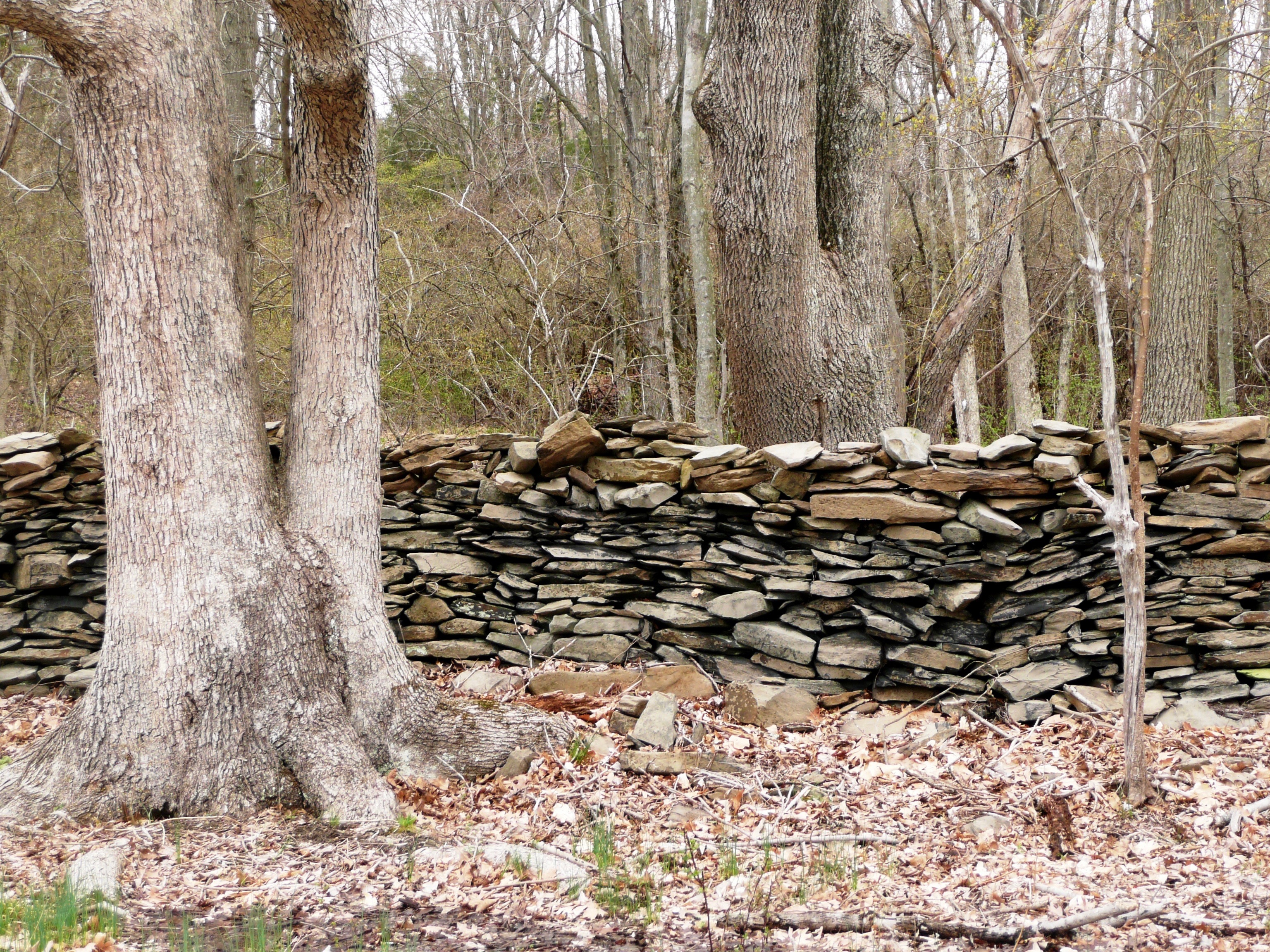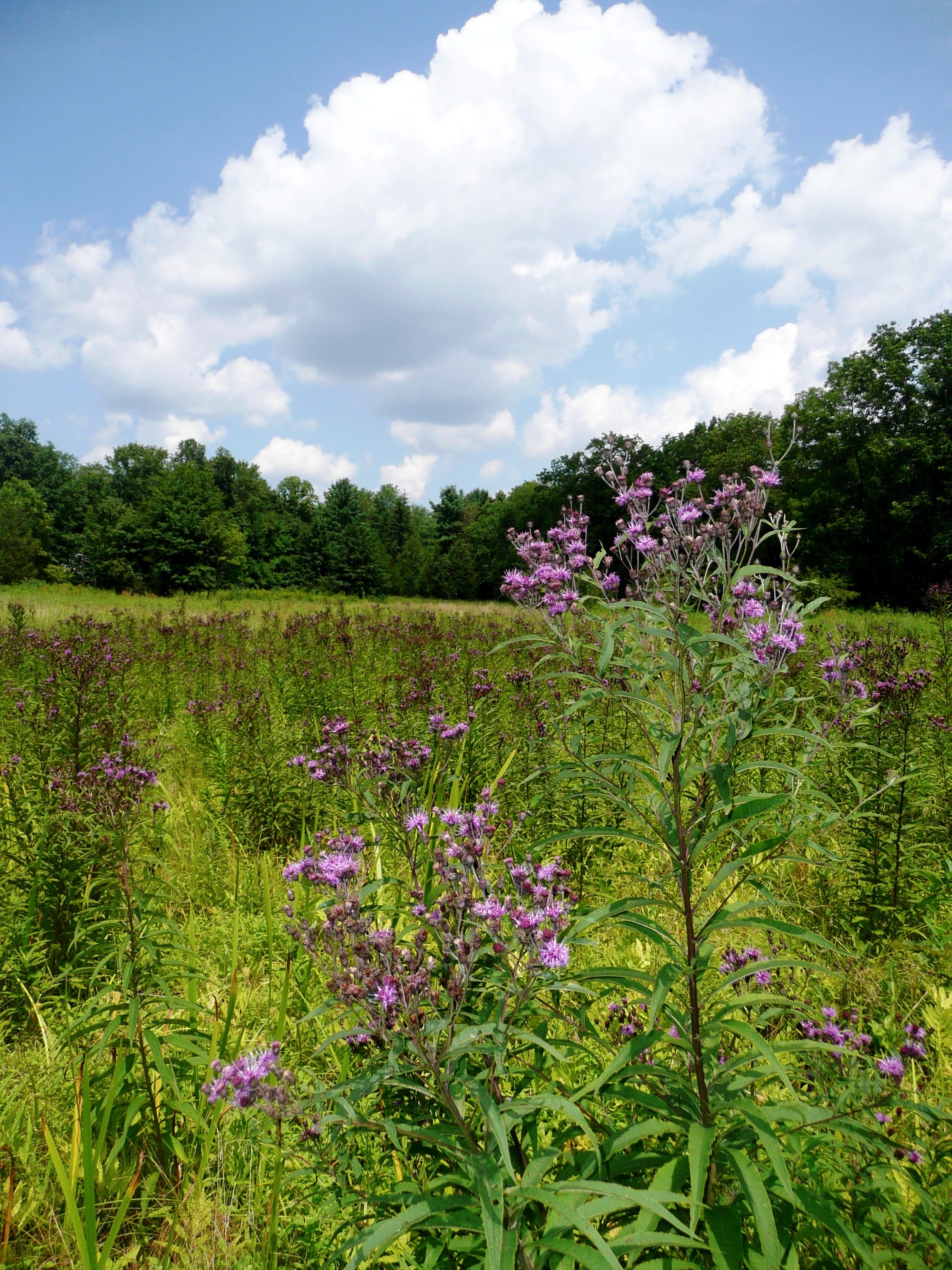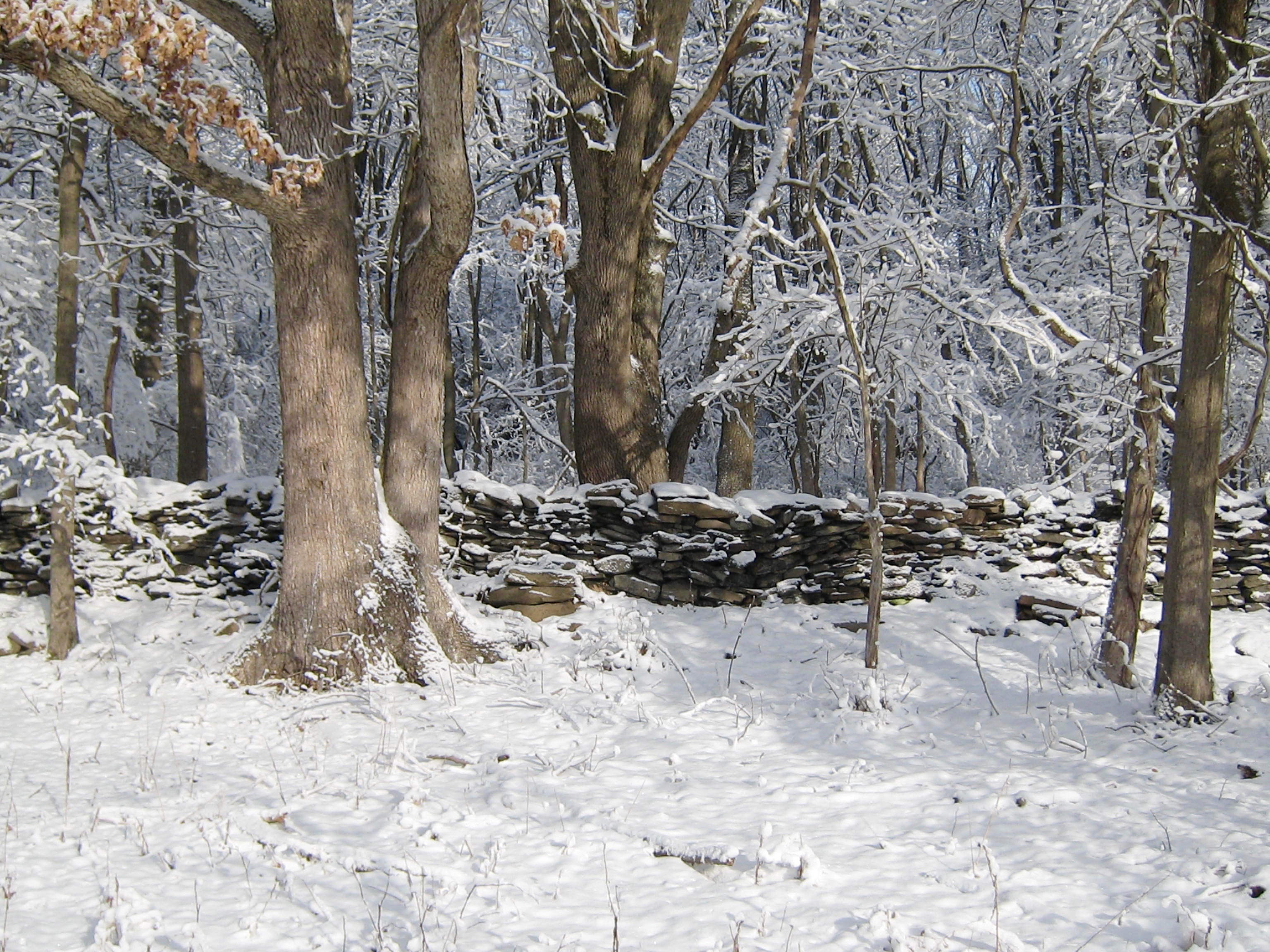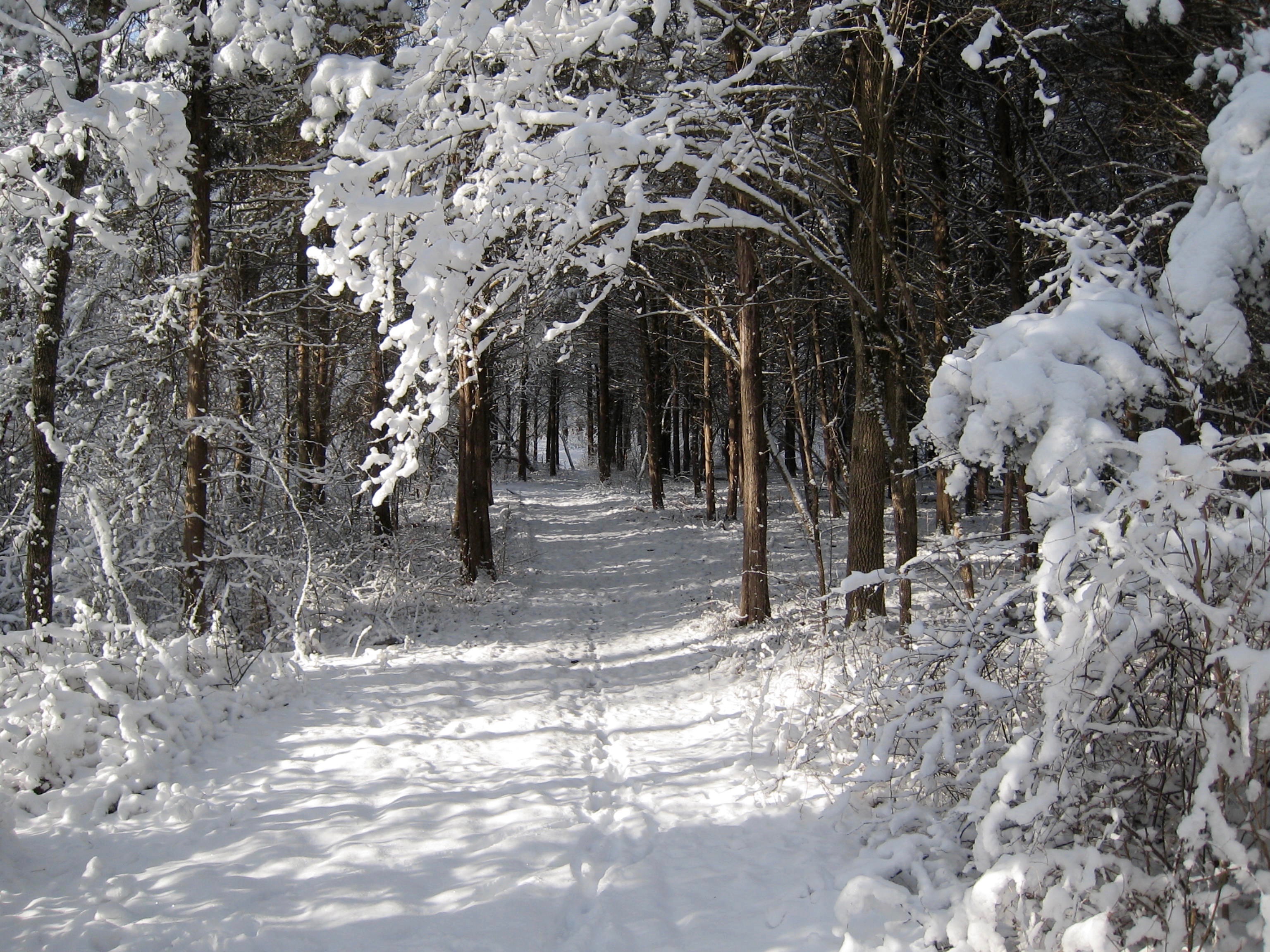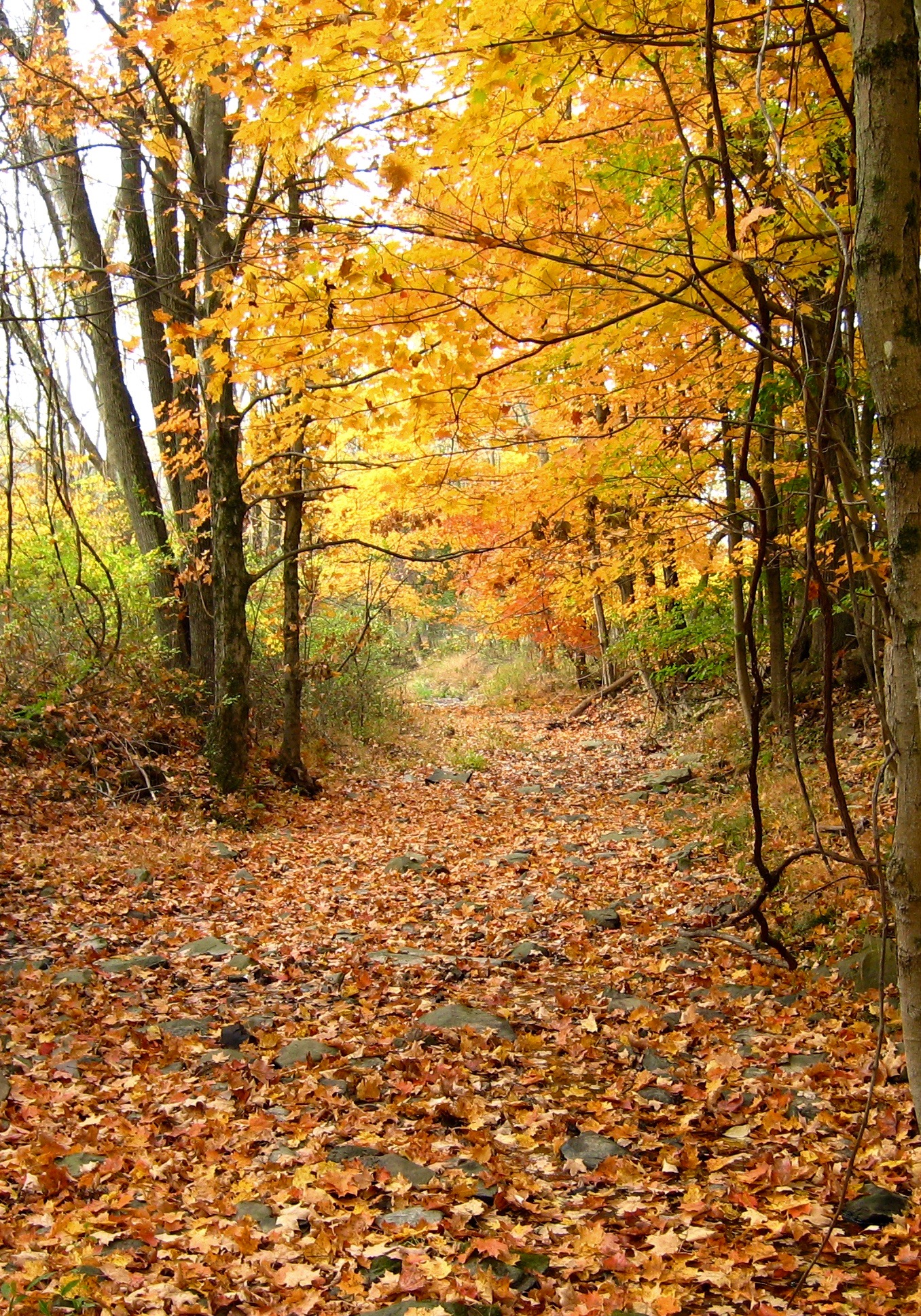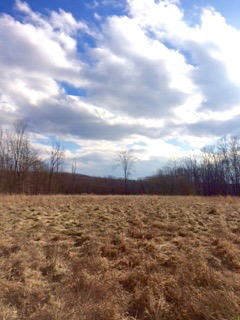Mercer
Hopewell Township
Cedar Ridge Preserve
Hopewell Township, NJ 08525

Last Updated: 06/03/2025
Overview of Selected Trail
Cedar Ridge Preserve consists of a combination of open meadows and woodlands covering 220 acres at the edge of the Sourland Mountains. Cedar Ridge is a flagship preserve of D&R Greenway Land Trust, a non-profit land preservation organization based in Princeton, NJ. D&R Greenway’s mission is to preserve and care for land and inspire a conservation ethic, now and for the future.
The preserve is bordered by Stony Brook Road to the west, Route 518 to the south and Van Dyke Road to the east, with parking areas on Van Dyke and Stony Brook Road. From Van Dyke Road, the trail loops around meadows and runs parallel to the stream (the Stony Brook) before heading north through cedar and young deciduous forest. The portion of the trail from Stony Brook Road follows a gravel driveway across open fields and mature deciduous forest with an open understory.
-
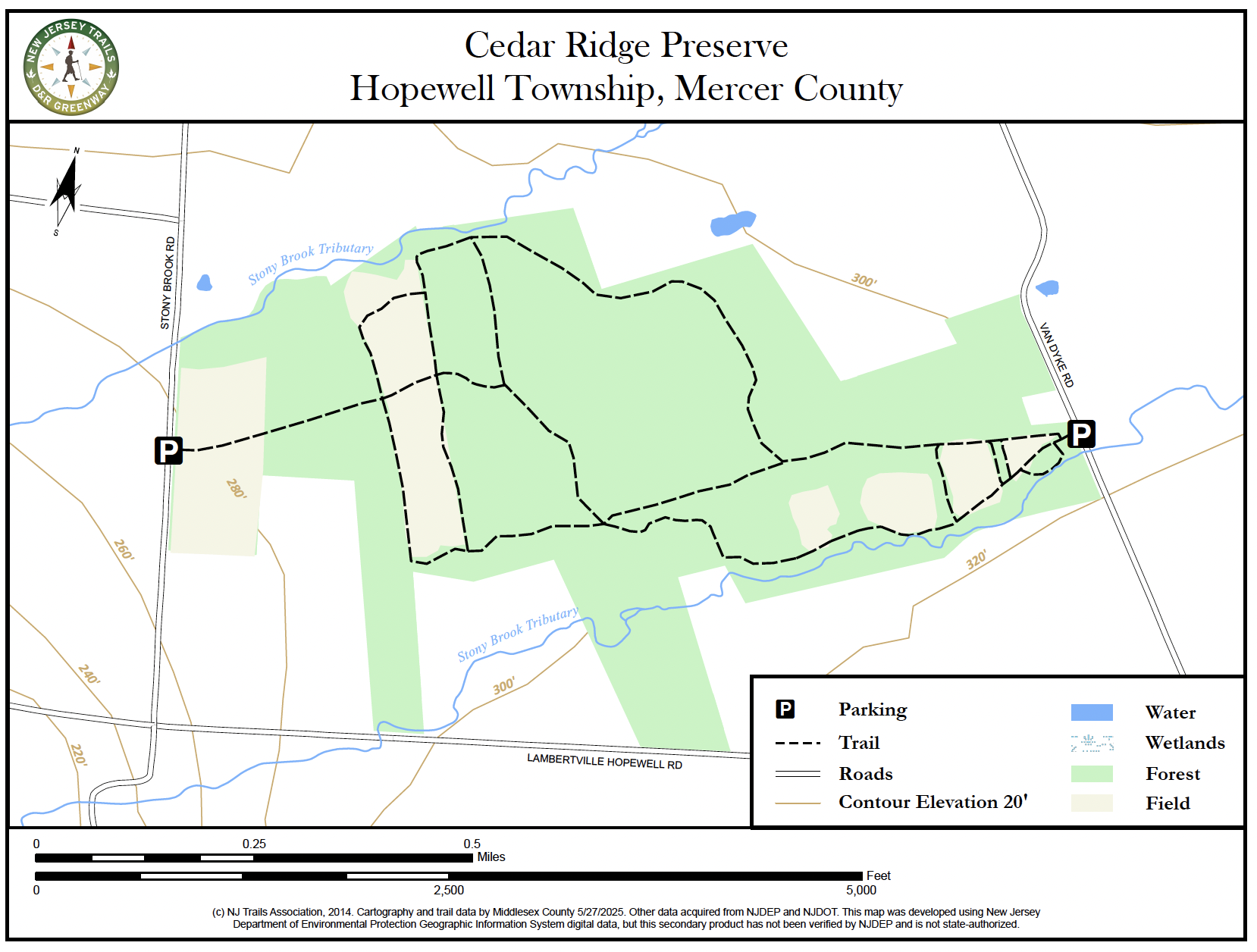
-
Distance:
Total of ~ 3.8 miles of tails. Trail loops allow for shorter hikes if desired.
Time:
Allow 60 – 90 minutes for round trip.
Markings:
There are green D&R Greenway trail markers and trail maps at key intersections.
Trail Usage:
Walking/Hiking. Dogs must be kept on leash to protect ground nesting birds and other wildlife. No camping or fires permitted. No motorized vehicles or bikes allowed to protect sensitive habitats and prevent trail damage. During deer hunting season (September through February), hikers are advised to wear bright colors and stay on trails. Our permitted hunters do not hunt the property on Sundays. Hunting with permission of D&R Greenway ONLY.
Elevation:
Minimal
Difficulty:
Easy
Parking:
There is a 5-car parking lot on Van Dyke Road and an 8-car parking lot on Stony Brook Road.
Tips:
None.
Amenities:
There are kiosks with trail maps and information at both parking areas and a large interpretive sign along the trail near Stony Brook Road describing the wildlife and habitat types on the preserve. There are also smaller habitat-themed interpretive signs, boardwalks and benches around the preserve.
Directions:
From Princeton:
Follow Nassau Street to 206 South. Turn right onto Elm Road. Left at first traffic light onto Rosedale Road. Follow to the end and turn right onto Carter Road. Follow Carter Road all the way to the end. Turn left onto Route 518 West. Follow 518 through Hopewell Borough. Bear right to stay on 518 outside of the borough. Soon after the blinking traffic light, turn right onto Van Dyke Road. The trailhead is on the left, at the bottom of the hill, just past the stream crossing.
For the Stony Brook Road parking lot – continue on Route 518 West. Turn right on Stony Brook Road. The parking lot will be on your right in an open field.
From Pennington:
Route 31 North to Route 518 East. Right onto 518 East and turn left at Van Dyke Road. The trailhead is on the left, at the bottom of the hill, just past the stream crossing.
For the Stony Brook Road parking lot – continue on Route 518 East. Turn left on Stony Brook Road. The parking lot will be on your right in an open field.
-
Cedar Ridge Preserve consists of a combination of open meadows and woodlands covering 220 acres at the edge of the Sourland Mountains. Cedar Ridge is a flagship preserve of D&R Greenway Land Trust, a non-profit land preservation organization based in Princeton, NJ. D&R Greenway’s mission is to preserve and care for land and inspire a conservation ethic, now and for the future.
The preserve is bordered by Stony Brook Road to the west, Route 518 to the south and Van Dyke Road to the east, with parking areas on Van Dyke and Stony Brook Road. From Van Dyke Road, the trail loops around meadows and runs parallel to the stream (the Stony Brook) before heading north through cedar and young deciduous forest. The portion of the trail from Stony Brook Road follows a gravel driveway across open fields and mature deciduous forest with an open understory.
Cedar Ridge is a large mosaic comprised of meadow, grassland, shrubland, young and mature forest, streams and floodplain that provides habitats for a special type of wildlife – “edge species.”
The “edge effect” is an ecological concept of greater species diversity where the edges of two adjacent ecosystems overlap. At this “ecotone”, some species from both ecosystems occur, plus other species that are only found in that particular ecotone. As opposed to forest-interior species that shy away from edges, edge species benefit from having different habitats near one another, moving between them to obtain resources needed at different stages of their life cycle.
Birds found near edges include red-tailed hawk, American woodcock, Baltimore oriole, northern flicker, eastern towhee, indigo bunting, and brown-headed cowbird. Butterflies such as the northern spicebush and tiger swallowtail nectar as adults in open fields and lay their eggs on certain trees along the forest edge where the caterpillars will feed and grow. Dragonflies and damselflies begin their lives as aquatic insects but require the vegetation of the adjacent floodplain to emerge and transform into winged adults. Mammals adapted to edges include white-tailed deer, raccoons, skunks, and red fox.
Negative Effects of Edges
Sharp edges caused by clearing or development create poor habitat. When there is no ecotone buffer, strong winds can cause damage to the forest edge. Increased sunlight and decreased moisture cause rapid climate changes, exotic plant invasions occur, and there is increased nest predation and parasitism of forest-interior birds. These negative effects are most severe when there is more edge than interior forest, thus a rectangular-shaped forest is more vulnerable than a circular-shaped forest.
Good Land Stewardship
D&R Greenway’s stewardship for Cedar Ridge involves maintaining a healthy mosaic of habitats: creating wider ecotones with native sun-loving shrubs and small trees between open meadow and forest habitats and re-connecting small forest fragments to avoid the negative effects of edges. Stewardship practices include annually mowing the meadows; removing invasive shrubs; and managing deer to prevent the over-browsing of the forest understory. A seven-acre fenced area, formerly a monoculture of invasive autumn olive, was replanted to benefit species that need young forest in their life cycle. A variety of native trees and shrubs were planted in the oak/hickory stand near the Stony Brook parking lot, to improve the understory of this stand and provide a variety of forest habitat levels.
-
The Cedar Ridge trail allows the hiker to experience several different habitats over a very short distance. This preserve contributes to the preservation of the Stony Brook Corridor, which has been one of D&R Greenway’s principle goals since its founding.
The meadows are full of wildflowers including black-eyed susan, queen anne’s lace, dogbane and milkweed to name just a few. They are a great place for a variety of songbirds such as bluebirds, goldfinches and sparrows. Watch for monarch, black swallowtail and skipper butterflies in the summer. The meadows are also home to the meadow vole, the most common land mammal in the United States. This small rodent helps insure the survival of larger carnivores throughout the year. During the winter, look for evidence of foxes or skunks digging up vole nests and scan the tree line for red- tail hawks in search of their next meal.
Look for tiny stonefly and mayfly nymphs in the stream as well as crayfish under the rocks. Skunk cabbage, with its unique flower, grows alongside the stream. In the spring and early summer, look for the large green leaves that identify this wetland plant.
The mixed evergreen forest is home to eastern red cedar and blue spruce. The red cedar is actually a juniper whose bluish berries, borne on female trees, are used in the production of gin. Stands of mixed evergreen are favored day roosting spots of Great Horned and Screech owls. During the winter, it is not uncommon to find winter visitors such as Long Eared owls in spots such as these.
The oak-hickory forest supports a wide variety of deciduous trees such as shagbark hickory, red and white oak, and ash. White-tailed deer and wild turkey frequent these places in search of acorns produced by the oaks. During the summer, listen for the plaintive song of the Wood Thrush and the harsh “teacher, teacher, teacher!” of the Ovenbird.
Do you have information about this trail?
Click Here to contribute.
-
Thirty-five aces of this land were among the first properties permanently preserved by D&R Greenway Land Trust in 1995. Since then, five more properties have been added, including a 52-acre parcel in 2014 that connected Van Dyke Road with Stony Brook Road. For more about D&R Greenway, including information about preserving your land, guided walks, public lectures, art exhibits and our native plant nursery, please visit our website at www.drgreenway.org or call us at 609-924-4646. Visit our headquarters at One Preservation Place, off of Rosedale Road in Princeton.
Do you have information about this trail?
Click Here to contribute.
-
Photos
Videos

